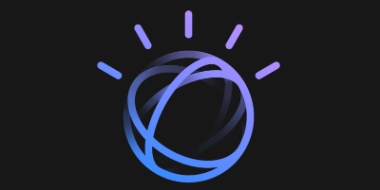About cookies on this site Our websites require some cookies to function properly (required). In addition, other cookies may be used with your consent to analyze site usage, improve the user experience and for advertising. For more information, please review your options. By visiting our website, you agree to our processing of information as described in IBM’sprivacy statement. To provide a smooth navigation, your cookie preferences will be shared across the IBM web domains listed here.
Analytics
How Cloud and Data are Speeding Up Weather Forecasting
September 1, 2015 | Written by: Mike Zimmerman
Categorized: Analytics | Cloud Computing | Smarter Planet
Share this post:
The Weather Company delivers, on average, 15 billion weather forecasts to consumers and businesses every day. That’s an increase of more than 25-fold in the past five years, says Mark Gildersleeve, president of the business division of The Weather Company, which also owns the Weather Channel. The Weather Company is partnering with IBM to deliver those forecasts in real-time for 2.2 billion locations across the globe – a feat that would have been unthinkable without the recent advancements in cloud, mobile and data analytics. The Smarter Planet caught up with Gildersleeve to talk about how these new tools and technologies have improved forecasting and changed his business.
Smarter Planet: Throughout history, humankind has been trying to minimize the impact of weather. How close are we to achieving this?
Mark Gildersleeve: You know that old joke: Everybody complains about the weather, but no one ever does anything about it? Well, there are a number of companies we work with now who’ve decided to do something with weather data. Take airlines. They’re utilizing advanced forecasting to proactively cancel flights and communicate the decision to customers hours before they’re due at the airport. Even though they’re canceling earlier, the total number of cancelations has gone down because airlines have figured out how to recover faster. Then there’s insurance. Insurers are sending policyholders alerts, saying, ‘There is a greater than 50% probability that windshield-damaging hail will occur at your location in the next 30 minutes. Move your car indoors.’ And more than 50% of people take action. For every car that’s moved inside, there’s a potential average savings of $3,000. These industries have learned how to be proactive about weather, and it comes down to more confidence in the accuracy of the weather forecasts we deliver.
SP: How has data improved forecasting?
MG: It all starts with data. The more data we assimilate – from official government and private citizen data sources – into our models the more precise the forecast we deliver. Weather forecasting has become this great Internet of Things story. Customers use smartphones to request forecasts, and many – over 80% – also allow us to collect their location data, plus atmospheric pressure data, which improves our forecast modeling. In the future, user-generated content – photos and videos – will supplement this. There’s a huge power of crowd-sourced weather content that we’re trying to tap into. It’s easily 25 or 50 times bigger than the scale we were operating at 5 years ago. Mobile usage has created this massive ramp-up in the consumption of weather information, and cloud allows us to meet that demand.
 SP: What role does cloud play?
SP: What role does cloud play?
MG: It allows us to do data analytics on the fly. It allows us to be more precise, more timely and everywhere. We used to create forecasts every six hours. We now update those forecasts every 15 minutes for 2.2 billion locations. We’re operating at a scale that we could not have ever imagined prior to the cloud and prior to our ability to bring such computer horsepower to bear.
SP: How has this data deluge changed the way you run the business?
MG: The most important lesson we’ve learned is the need to make decisions faster. We can’t afford to be as deliberative and need to make decisions with less-than-perfect information. That’s where the action is. It’s a big thing to learn. Cloud equals speed in many ways. It improves the user experience as well as the speed of our decision-making.
SP: Has all this change altered your view of company’s mission?
MG: I used to think we were a weather company. I was wrong. We’re a decision company. It’s all about the decisions that people need to make based on the weather that’s important, not the weather itself. How much power are they going to need to provide to their service area? How many planes are going to land at O’Hare between 3-4 pm today? We try to present the forecast of store traffic or whatever specific outcome that the business cares about.
_______________________________________________
Gildersleeve’s story, which first appeared on Forbes, is one of several featured in IBM’s Wild Ducks series of podcasts and videos that celebrate the innovators of tomorrow, today. Check out the entire Wild Ducks series of podcasts and follow us on twitter @IBMWildDucks. To receive the podcast episodes automatically, subscribe on itunes and soundcloud.
And be sure to read these other great Smarter Planet stories on the Wild Ducks series:
More stories
Igniting the Dynamic Workforce in Your Company
In the rapid push to moving to remote work, we’ve seen digital strategies accelerate by years – transforming their workplaces, workstyles, and business processes forever. Overnight, remote workforces put advanced environments of multi-device mobility, dynamic connection points and robust cloud-based apps that ease communication and collaboration. A new normal is emerging, led by the companies aggressively adopting cloud […]
Watson Anywhere: The Future
(Part 3 in a Series) There’s a paradox in the world of AI: While it’s the largest economic opportunity of our lifetime (estimated to contribute $16 trillion to GDP by 2030), enterprise adoption of AI was less than 4% in 2018. A recent Gartner survey said that the 4% in 2018 has now grown to […]
IBM Watson: Reflections and Projections
(Part 1 in a Series) AI has gone through many cycles since we first coined the term “machine learning” in 1959. Our latest resurgence began in 2011 when we put Watson on national television to play Jeopardy! against humans. This became a cornerstone event, demonstrating that we had something unique. And we saw early success, putting […]




